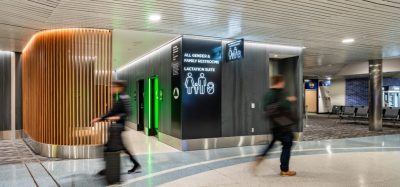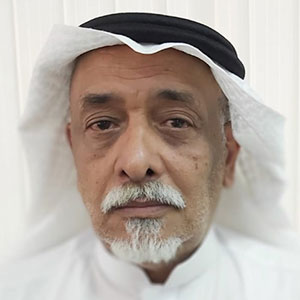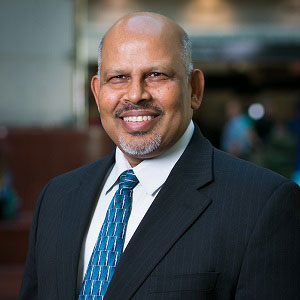Rovaniemi and Lapland Airports: growth and development in the Arctic
Posted: 8 October 2025 | Jonna Pietilä | No comments yet
Rovaniemi Airport and Lapland’s airports are driving tourism growth with expanded facilities, improved passenger services, sustainable operations and year-round connectivity, enhancing regional development and global appeal.
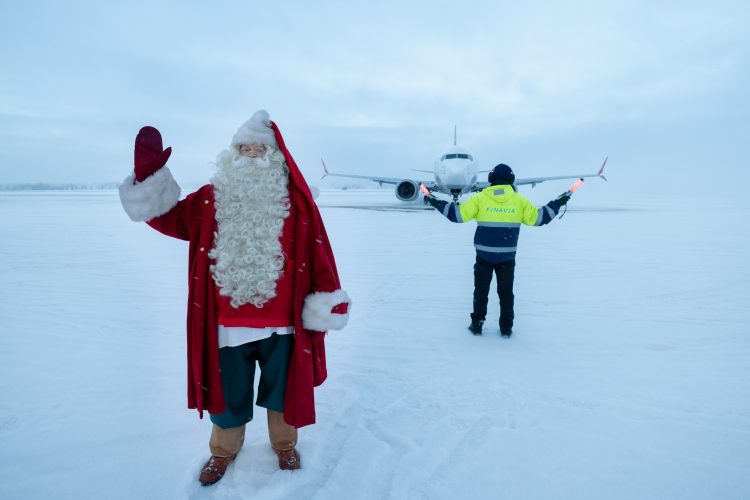

Christmas at Finavia's airports is full of joyful encounters and the magic of Christmas. Credit: Finavia Corporation.
Tourism in Finnish Lapland has grown significantly in recent years, but efforts to support this growth have been underway for decades. In addition to Finavia, local tourism operators have strongly participated in the collaboration, from strategic planning to everyday operational details.
As a result, Rovaniemi Airport has become Finland’s second busiest airport, after Helsinki Airport, in terms of passenger volumes. The airport plays a key role in tourism in the region, due to its location at the centre of the Finnish Lapland. Finavia’s five Northern airports create a gateway to the Arctic area of Europe.
Lapland’s tourism and attractions in transformation
Rovaniemi Airport is one of several airports in the Finnish Lapland owned by Finavia. The airports form a well-functioning network that supports smooth travel across the whole region. All Lapland airports are located close to nature attractions and popular travel destinations, making transfers from the airport to hotels, and getting around Lapland, easy and convenient.
Twenty years ago, Rovaniemi and other airports in Lapland mainly received charter flights, and a large portion of these offered tightly scheduled day trips. Today, the situation is completely different; the time that charter flight passengers spend in Lapland has increased to several days, and scheduled flights have emerged alongside charter flights. In fact, scheduled flights now account for more than half of all flights. This enables independent travel and offers a chance to experience a variety of destinations across Lapland during one trip. For the airport owner, the change means a more balanced traffic structure and improved predictability.
This simulation-based approach reflects Finland’s and Finavia’s commitment to climate goals and sets a benchmark for sustainable airport development across Europe.”
In 2024, the number of passengers at Rovaniemi Airport increased by nearly 30% year-on-year and the number of commercial flights by 25%. The connections from European cities to Lapland remained strong, and we saw an increase, especially, in routes from France, the UK and Germany. We are expecting an even larger number of flights for the next winter season, W25, so the growth continues.
We can already see another exciting change. Finavia’s goal is to extend flight connections in Lapland to also cover the summer season, and there is already a shift from a purely winter-focused travel to year-round tourism, which opens an entirely new Lapland experience for visitors.
The shared goal of Finavia and tourism operators in Lapland is to increase the attractiveness of summer tourism. The summer season, although not as famous as the winter season, offers an amazing variety of attractions from national parks and extreme sports to Finnish cuisine and local towns. Our studies reveal that tourists are increasingly interested in visiting Lapland during the summer season. The growth of tourism in Rovaniemi reflects positively throughout the entire Lapland region. This will also create new opportunities for the development of routes at other airports in Lapland.
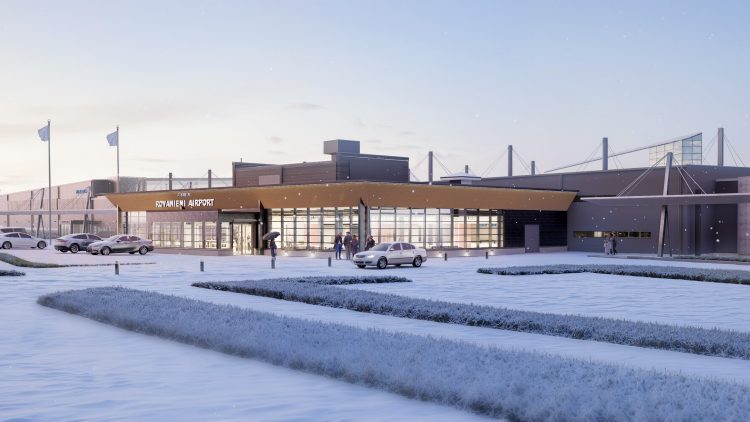

Illustration of the extension of the departure hall of Rovaniemi Airport. Illustration by UKI Architects.
More space for passengers at Rovaniemi Airport
We completed a three-year development programme in our Lapland airports in 2020. However, our work to improve customer experience is not over. This is why we are expanding the departure hall of Rovaniemi Airport this year.
Currently, the hall’s expansion work is already halfway finished, and preparations for the winter season are well underway. The purpose of Rovaniemi’s expansion is to provide more space for passengers and thus continue the already high level of customer satisfaction during the busiest months. The airport capacity will not increase because of this project; instead, the upgrade will ensure better customer experience and improve the terminal processes.
The expansion has been carefully designed to enhance operational efficiency and improve the passenger facilities. Spacious interiors and large panoramic windows bring in natural light, making the departure hall significantly brighter and more welcoming. The windows also offer views of the surrounding Lapland landscape, allowing travellers to enjoy the beauty of nature even indoors.
While the focus of the expansion is on practicality and smooth passenger flow, the magic of Christmas and the unique seasons of Lapland remain ever-present throughout the airport. These beloved elements will continue to be reflected in the new spaces, creating a warm and memorable atmosphere for all visitors. One thing that is often overlooked when talking about customer experience at airports is the atmosphere that comes from people. We are here to make every passenger’s airport experience exceptional and memorable. For that, we need more than smooth airport processes. We want the magic of Lapland to be visible at the airport — the magic that comes from travellers, long-awaited experiences and togetherness. For us who work at the airport, every passenger interaction is personalised, and we truly enjoy being part of unforgettable moments.
We want the magic of Lapland to be visible at the airport”
If we go back to the concrete development of the airport, in addition to the departure hall extension, the ground traffic areas in front of the airport are undergoing renovation and reorganisation. This winter season, different modes of transport, such as taxis, buses and private cars, will be more clearly located in their own areas. The purpose of the change is to streamline traffic in the area and clarify traffic arrangements.
Last year, Rovaniemi Airport ranked among the top three in its size category in ACI’s Best Airport Award competition. The justification provided by ACI highlighted several aspects that align closely with the areas we have focused on in recent years. The high level of passenger satisfaction at Rovaniemi Airport is supported by smooth airport operations and high-quality personnel management, which is especially important in a seasonal and fast-paced working environment.
Rovaniemi Airport will also be slot coordinated during the winter seasons, starting in W25. Slot coordination will improve the use of the airport and contribute to improvements in on-time-performance. In summary, Rovaniemi Airport will be ready to serve passengers and airport users in expanded facilities and with improved traffic arrangements by October.
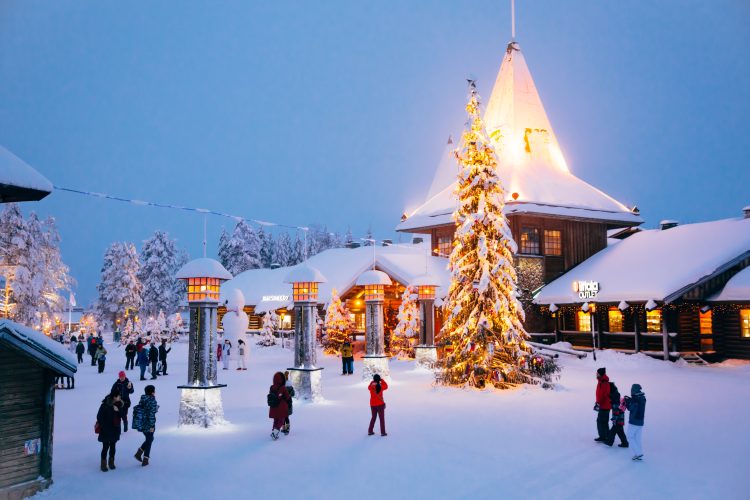

Central Plaza in Santa Claus village, Rovaniemi. Credit: Visit Rovaniemi.
Developing a net zero level airport infrastructure
Finavia achieved net zero carbon emissions in its own operations at the airports of Ivalo, Kittilä, Kuusamo and Rovaniemi in 2023 through the Airport Carbon Accreditation (ACA) programme. In 2024, Helsinki Airport reached the same level. This means Finavia now owns five of the approximately 20 net zero airports worldwide. Our goal is for all 20 Finavia airports to be net zero by the end of 2025. In addition, Ivalo, Kittilä, Kuusamo, and Rovaniemi airports were awarded Visit Finland’s Sustainable Travel Finland certificate in 2023.
Just like in other parts of the world, carbon emissions at Finnish airports mainly result from terminal lighting, electricity use, heating, cooling and vehicle energy consumption. Since 2018, Finavia has used emission-free electricity, and the vehicles at its airports have been fuelled with diesel made from waste and residues. Due to Finland’s climate, heating needs are substantial, as winters are long and temperatures can drop to as low as -35 degrees Celsius during the coldest months.
Finavia’s total energy consumption across all operations and airports amounted to 175 GWh last year. Since 2018, Finavia has improved its energy efficiency, calculated as the amount of energy used (kWh) per building cubic metre. Energy efficiency is a key focus in all operations, including infrastructure maintenance, upkeep and equipment procurement. Measures to reduce energy consumption in recent years have included switching to LED technology, automating the heating of aircraft parking stands, and lowering terminal indoor temperatures whenever possible without compromising airport operations or the wellbeing of staff and passengers.
Due to major development programmes at Helsinki Airport (2013–2023) and Lapland airports (2018–2020), the total building volume of terminal facilities owned by Finavia has increased significantly in recent years. Nevertheless, electricity consumption has decreased over the past three years.
In Rovaniemi, the extension construction was carried out during the quieter summer months, meaning it didn’t affect traffic. Finavia already follows strict environmental regulations at Rovaniemi Airport, so we didn’t receive additional reporting or reviews from the Finnish authorities. However, the expansion of Rovaniemi Airport was guided by a comprehensive energy simulation, enabling the optimisation of building energy performance and the reduction of its life-cycle carbon footprint. This proactive approach allowed for responsible design choices in the planning phase.
Unlike in many parts of Europe, where energy modelling may be limited or optional, in Finland, energy simulations are a regulatory requirement as part of the national energy performance assessment. This ensures that every major building project is evaluated for its environmental impact using data-driven methods.
The simulation process involved modelling the building’s thermal behaviour to ensure efficient performance in Arctic climate conditions. It also included forecasting energy consumption across different design alternatives to identify the most effective solutions. Finally, scenario comparisons supported decision-making by balancing energy efficiency, user comfort and cost-effectiveness. This simulation-based approach reflects Finland’s and Finavia’s commitment to climate goals and sets a benchmark for sustainable airport development across Europe.
With all the improvements we have made inside and outside the terminal, I’m glad to say that Rovaniemi Airport, as well as all our other Lapland airports, are ready for the upcoming winter season. I’m sure that we will see a high number of flights during the winter months and the airport will be very busy.
Last year, we were just a few passengers short of reaching one million travellers. I believe that in January 2025, Rovaniemi Airport will reach the milestone of one million passengers for the first time in its history. When that happens, we can say that Rovaniemi Airport is no longer a small regional airport, but a significant enabler of international tourism.
About the Author
Jonna Pietilä is the Vice President of Lapland and Northern Finland Airports at Finavia, responsible for managing and developing the key airports, including Kittilä and Rovaniemi. She holds an MSc in Tourism and is a Certified Board Member (CBM, HHJ).
With experience both in aviation and tourism, Pietilä plays a central role in strengthening Lapland’s connectivity and supporting the region’s growth as a world-class travel destination. She is also an advocate for sustainable development, contributing to Finavia’s achievement of net zero carbon emissions at several regional airports and promoting sustainable tourism certifications across Finavia’s Lapland airports.
Join our free webinar: Transforming Airport Security – Innovation, Impact, and the Passenger Experience
The landscape of airport security is undergoing a profound transformation, driven by evolving threats, technology, and passenger expectations. This webinar focuses on how AtkinsRéalis has been transforming security processes at some of the world’s busiest airports with smarter, more adaptive solutions.
Date: 4 Nov | Time: 14:00 GMT
REGISTER NOW TO SECURE YOUR SPOT
Can’t attend live? No worries – register to receive the recording post-event.
Related topics
Airlines, Airport Carbon Accreditation (ACA), Airport construction and design, Airport development, Passenger experience and seamless travel, Passenger volumes, Route development, Sustainability, Tourism, Winter operations
Related airports
Helsinki Airport (HEL), Ivalo Airport (IVL), Kittilä Airport (KTT), Kuusamo Airport (KAO), Rovaniemi Airport (RVN)






